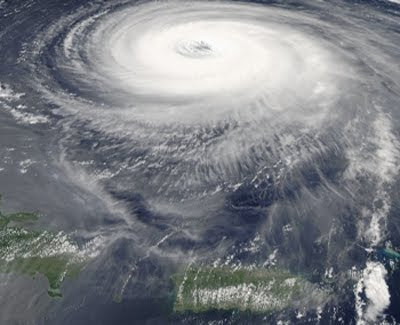
In less than two weeks, NASA scientists will begin their quest for the holy grail of hurricane research.The exact conditions required to kickstart a tropical depression into a hurricane largely remain a mystery. Though scientists know many of the ingredients needed, it is unclear what processes ultimately drive depressions to form into the intense, spinning storms that lash the U.S. coasts each summer."Hurricane formation and intensification is really the ‘holy grail' of this field," said Ed Zipser, an atmospheric scientist at the University of Utah and one of three program scientists helping to lead the Genesis and Rapid Intensification Processes (GRIP) experiment this summer.
With GRIP, NASA's first domestic hurricane project since 2001, the agency has assembled the largest-ever hurricane research experiment to investigate these questions. Three NASA planes, multiple NASA satellites and four planes from research partners NOAA and NSF will combine to make unprecedented measurements of tropical storms as they are forming (or dying out) and intensifying (or weakening). The intense scientific focus on these meteorological processes could provide new insight into the fundamental physics of hurricanes and ultimately improve our ability to forecast the strength of a storm at landfall. Predictions of hurricane strength continue to lag behind the accuracy of storm track predictions, but accurate predictions of both are needed for the best possible preparation before landfall.
With each aircraft outfitted with multiple instruments, scientists will be taking a closer look at hurricanes with hopes of gaining insight into which physical processes or large-scale environmental factors are the key triggers in hurricane formation and intensification. The GRIP fleet includes NASA's Global Hawk, the unmanned drone built by Northrop Grumman and also used by the U.S. Air Force, WB-57 and DC-8. The NASA aircraft will be deployed from Florida (DC-8), Texas (WB-57) and California (Global Hawk) and will fly at varying altitudes over tropical storms in an attempt to capture them at different stages of development.
With GRIP, NASA's first domestic hurricane project since 2001, the agency has assembled the largest-ever hurricane research experiment to investigate these questions. Three NASA planes, multiple NASA satellites and four planes from research partners NOAA and NSF will combine to make unprecedented measurements of tropical storms as they are forming (or dying out) and intensifying (or weakening). The intense scientific focus on these meteorological processes could provide new insight into the fundamental physics of hurricanes and ultimately improve our ability to forecast the strength of a storm at landfall. Predictions of hurricane strength continue to lag behind the accuracy of storm track predictions, but accurate predictions of both are needed for the best possible preparation before landfall.
With each aircraft outfitted with multiple instruments, scientists will be taking a closer look at hurricanes with hopes of gaining insight into which physical processes or large-scale environmental factors are the key triggers in hurricane formation and intensification. The GRIP fleet includes NASA's Global Hawk, the unmanned drone built by Northrop Grumman and also used by the U.S. Air Force, WB-57 and DC-8. The NASA aircraft will be deployed from Florida (DC-8), Texas (WB-57) and California (Global Hawk) and will fly at varying altitudes over tropical storms in an attempt to capture them at different stages of development.
No comments:
Post a Comment